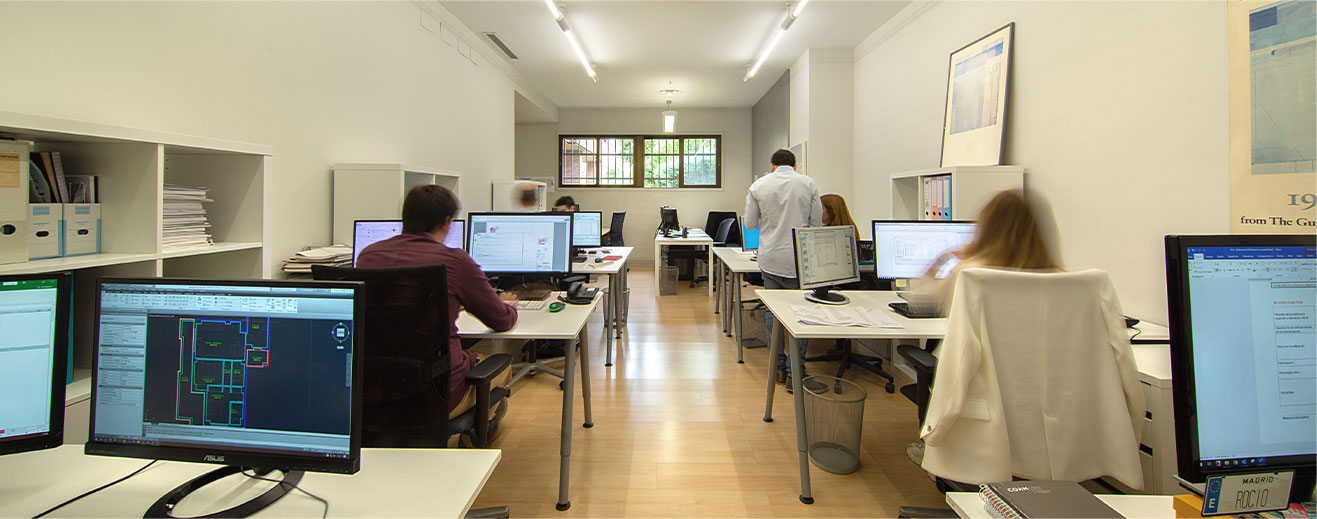The Studio
In our more than thirty years of professional experience we have worked across different fields of architecture, from smaller works in the early years, to renovations of premises and single-family homes, which we still continue to do today, to residential, commercial and healthcare buildings today.
From the outset of our professional venture we have always sought to offer flexibility in our services by means of collaboration with external professionals. This manner of approaching our work via the coordination of multidisciplinary teams has enabled us to offer appropriate responses in the different fields and areas of the architectural process, from early advice on initial decisions, through the design process and execution of the building, right up until the completion of the work.

B15's work is focused on the design of architectural buildings and urban planning in the very broadest sense.
In line with the current requirements of our profession, we offer our clients a comprehensive service that covers not just civil works but the entire building process, including the increasingly important search for balanced solutions in the areas of comfort, communications and above all energy efficiency in buildings.
The development of the architectural process is, to us, a constant give and take between the client’s requirements and the evolution of responses to the project, all of which are interrelated with the specific requirements of the function.
But this constant search for answers cannot be limited to the programmatic fact which, albeit essential as a basis for the logical development of the design and as a constant support in the geometric and constructive elaboration process, must be complemented by the personal requirements that are fundamental to its evolution and that serve to accompany the formal solutions in the search for beauty and spatial richness.
At B15 we have always taken this philosophy into account as a means of ensuring that our architecture never loses sight of the fact that responses leading to a formal solution must be the result of a thorough analysis of the requirements and the surroundings, without overlooking the essential role played by technologies that are in step with functional and environmental needs.
In recent years such a way of working appears to have been largely forgotten, tilting the balance, at first, towards the search for form as an end in itself.
Today, more than ever, the development of projects requires solutions that strike a balance between functional needs, economic possibilities and resources aimed at improving the energy efficiency of buildings.
Team

